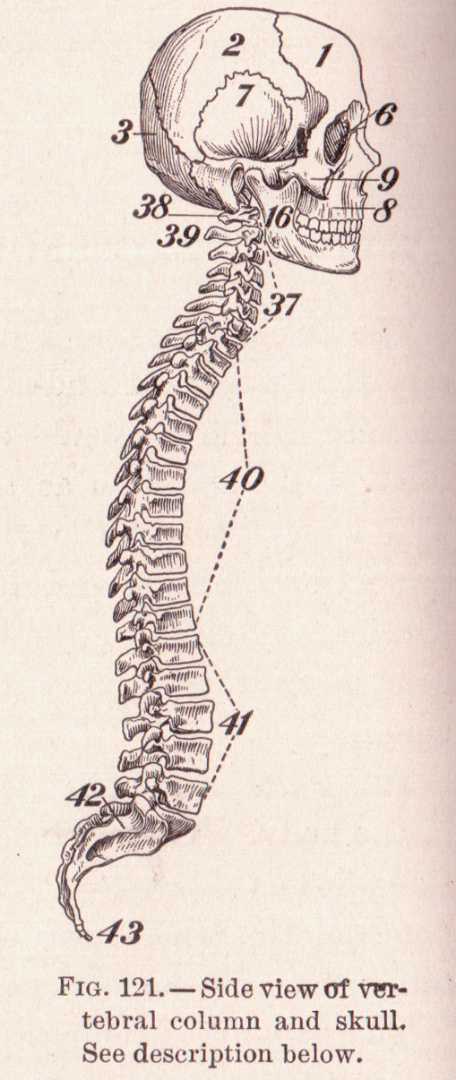Emotions are embodied. A chill up our spine. A sinking feeling in our stomach. Feeling choked up. Nervous legs. Quivering with fear. Heart racing with anticipation. Body-based interventions are known to be quite effective treatment for trauma. We offer a simple breathing and moving exercise to influence our emotions.

Side view of vertebral column and skull. The Human Body and Health Revised by Alvin Davison, p. 192, Skull and Spine. Copyright 1908 Alvin Davison. Copyright 1924 American Book Company
Breath lives at a boundary between our conscious and autonomic control. We usually breathe without thought. Sometimes we exercise different patterns of breathing. Through breath we can influence but not control our subconscious.
Our brains lie not only in our skull, but go all the way to our tailbone. Neurons with myelinated axons occur mainly in the skull and in the spine, but not in the limbs or elsewhere in the torso. Cerebro-spinal fluid circulates and nourishes the neurons in both our skull and in the spine.
For this breath exercise we will use our whole brain by including a simple movement of the spine with a deep breath.
To begin the exercise, though, please visualize yourself threatened. Imagine the moments in a recent incident when you didn't know what was going on. Or imagine a retrospective where things got combative. Take the time to really feel some elevated nervous system. Has your heartbeat quickened? Or other evidence of stress? Good.
As you exhale deeply, arch your spine slightly backwards. As you inhale, reverse the arch and open your chest, drop your shoulders. No need to be ambitious with this movement, just a slight arch backward as you exhale and slight arch forward as you inhale. Allow your shoulders to roll forward with the exhale and then open and drop them with the inhale.
Notice how your shape feels defensive with the exhale, spine arched backward, shoulders forward. Notice how your shape feels open and trusting when your torso is open and shoulders behind and down. Alternate from feeling defensive to feeling open and trusting. Notice how the breath and movement has influenced your emotional state.